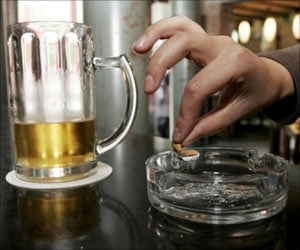In a new research, a team of archaeologists has identified traces of alcohol in prehistoric sites, which suggests that the thirst for a brew was an incentive for Neolithic man
In a new research, a team of archaeologists has identified traces of alcohol in prehistoric sites, which suggests that the thirst for a brew was an incentive for Neolithic man to start growing crops.
According to a report in Spiegel Online, as early as around 9,000 years ago, long before the invention of the wheel, inhabitants of the Neolithic village Jiahu in China were brewing a type of mead with an alcohol content of 10 percent, archaeologist Patrick McGovern discovered recently.McGovern analyzed clay shards found during excavations in China's Yellow River Valley at his Biomolecular Archaeology Laboratory for Cuisine, Fermented Beverages, and Health at the University of Pennsylvania Museum.
He ran so-called liquid chromatography coupled with mass spectrometry on the clay remnants from Asia and found traces of tartaric acid - one of the main acids present in wine - and beeswax in the shards' pores.
It appears that prehistoric humans in China combined fruit and honey into an intoxicating brew.
Lacking any knowledge of chemistry, prehistoric humans eager for the intoxicating effects of alcohol apparently mixed clumps of rice with saliva in their mouths to break down the starches in the grain and convert them into malt sugar.
These pioneering brewers would then spit the chewed up rice into their brew.
Advertisement
McGovern sees this early fermentation process as a clever survival strategy.
Advertisement
The most recent finds from China are consistent with McGovern's chain of evidence, which suggests that the craft of making alcohol spread rapidly to various locations around the world during the Neolithic period.
Shamans and village alchemists mixed fruit, herbs, spices, and grains together in pots until they formed a drinkable concoction.
McGovern carried the theory much further, aiming at a complete reinterpretation of humanity's history.
His theory states that agriculture - and with it the entire Neolithic Revolution, which began about 11,000 years ago - are ultimately results of the irrepressible impulse toward drinking and intoxication.
"Available evidence suggests that our ancestors in Asia, Mexico, and Africa cultivated wheat, rice, corn, barley, and millet primarily for the purpose of producing alcoholic beverages," McGovern explained.
Source-ANI
SRM










